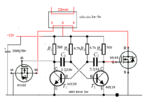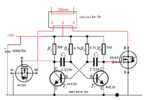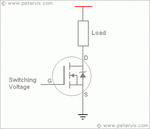unhappy
Member level 3
- Joined
- Jul 25, 2005
- Messages
- 55
- Helped
- 8
- Reputation
- 16
- Reaction score
- 8
- Trophy points
- 1,288
- Location
- NOIDA (NCR Delhi region),India
- Activity points
- 1,682
Knowing Indian market I suggested the use of darling-ton transistor. but if you try with SL100/Cl100/n100 it can be achievedWhy didn't you look at the datasheet of the 2N3904 to see that its maximum allowed current is only 200mA and its performance above 100mA is poor?
The maximum output current of a 2N2222, 2N4401 and hundreds of other transistors is 600mA or more and will work much better. The base resistor should be 180 ohms.



